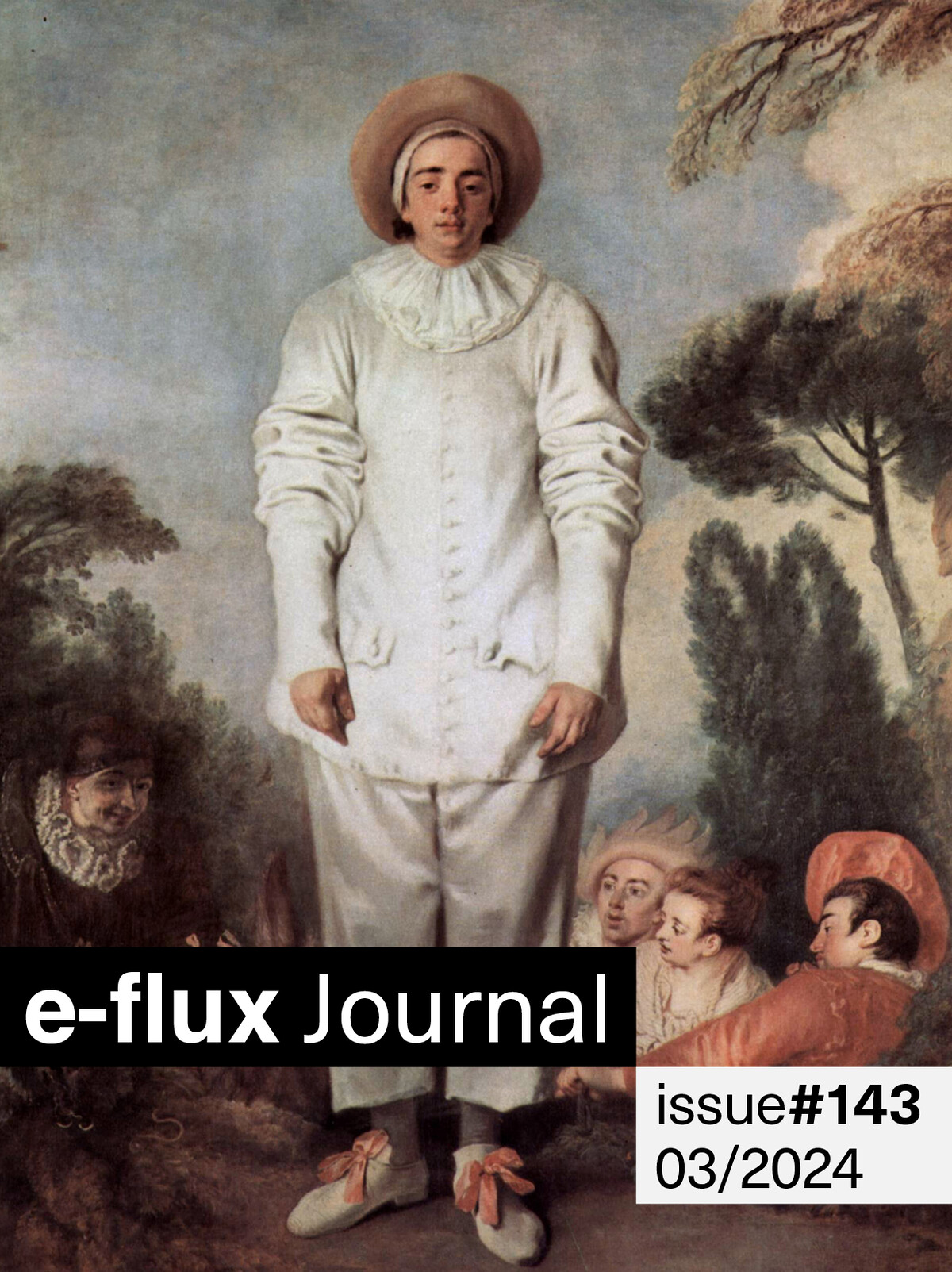Under the right conditions, each day contains two brief moments when the rising or falling sun hits at an angle so precise it arrests the eye. In this issue of e-flux journal, Oraib Toukan shows that there is more to what filmmakers and photographers call the “golden hour.” The unmistakable light of a brief interval also reveals things exactly as they are. In this time of Gaza’s devastation, Toukan explores the power and limitations of words and images in conveying the depth of Palestinian grief and dignity. The grounding concept of turbeh (soil) emerges as an axis for knowledge and justice, urging readers to look beyond the surface and into the soil grain of images.
Also in this issue, the second part of Evan Calder Williams’s series on paralysis further explores what it means when everything grinds to a halt and nothing works as it should. Whether as warfare tactic, labor struggle, or modern technological overextension, totalizing breakdowns of prostheses are often assumed to yield a profound insight into our dependency on their healthy functioning. While such an assumption may not be wrong, sites of breakdown and stoppage can also provide cover for darker forces. Pyromaniacs and market speculators feed off of volatility.
Cybotron’s “Clear” and Newcleus’s “(Computer Age) Push the Button” were two transformative 1980s techno-funk tracks, and through them Charles Tonderai Mudede examines the notion of erasing the past, including the memory of slavery, to embrace an uncertain future dominated by machines. Following the US’s transition from manufacturing to financialization, the tracks propose the total erasure of memory and the potential for a radical, frightening new form of liberation enabled by technology.
Antonia Majaca’s essay in this issue charts profound shifts in humanity’s understanding of its place in the universe, prompted by iconic images spanning from 1968’s “Earthrise” to the first photographic image, in 2019, of a black hole. Majaca critiques the techno-positivist fantasy that technology can solve all problems, arguing that this mindset overlooks the complex interdependencies of the earth’s systems—as well as the frightening limitations of computational governance.
In “Counterinsurgent: Cop City, Abolition Ecology, and the Aesthetics of Counterreform,” T. J. Demos outlines the urgent nexus of art, ecology, and activism through opposition to the proposed police training facility known as Cop City in Atlanta. Engaging with discussions of abolition, decolonization, and environmentalism, Demos argues that the movement against Cop City is crucial not only for its immediate impacts, but also as a stand against broader issues of racial and socioeconomic injustice, police violence, and climate apartheid.
In “The Greatest Distance Between Two Points Is a Straight Line,” Claudio Medeiros and Victor Galdino expand the cultural and philosophical depths of capoeira angola, contrasting it with the linear movement typical of Western thought and emphasizing its roots in African traditions—including resistance to oppression. They delve into the history of vadiagem (vagrancy) in Brazil, highlighting how societal views on idleness and mobility were shaped by racial and labor dynamics post-slavery, with capoeira angola practitioners (angoleiros) embodying defiance through their fluid, circular movements in public spaces.
Luis Camnitzer proposes a fictional history for the origin of the term “art.” In this scenario, a person in the Stone Age creates an awe-inspiring and undefinable object, leading admirers to seek a label for the inexplicable. The exclamatory term “art!,” from the Stone Ages forward, then became an ideal to strive for—a catch-all for subsequent objects whose creators wanted to evoke similar awe. Crucially, in this fictional tale, artists and their onlookers mistakenly focused on the objects themselves rather than the indescribable—and purposeless—quality that made them remarkable in the first place.


